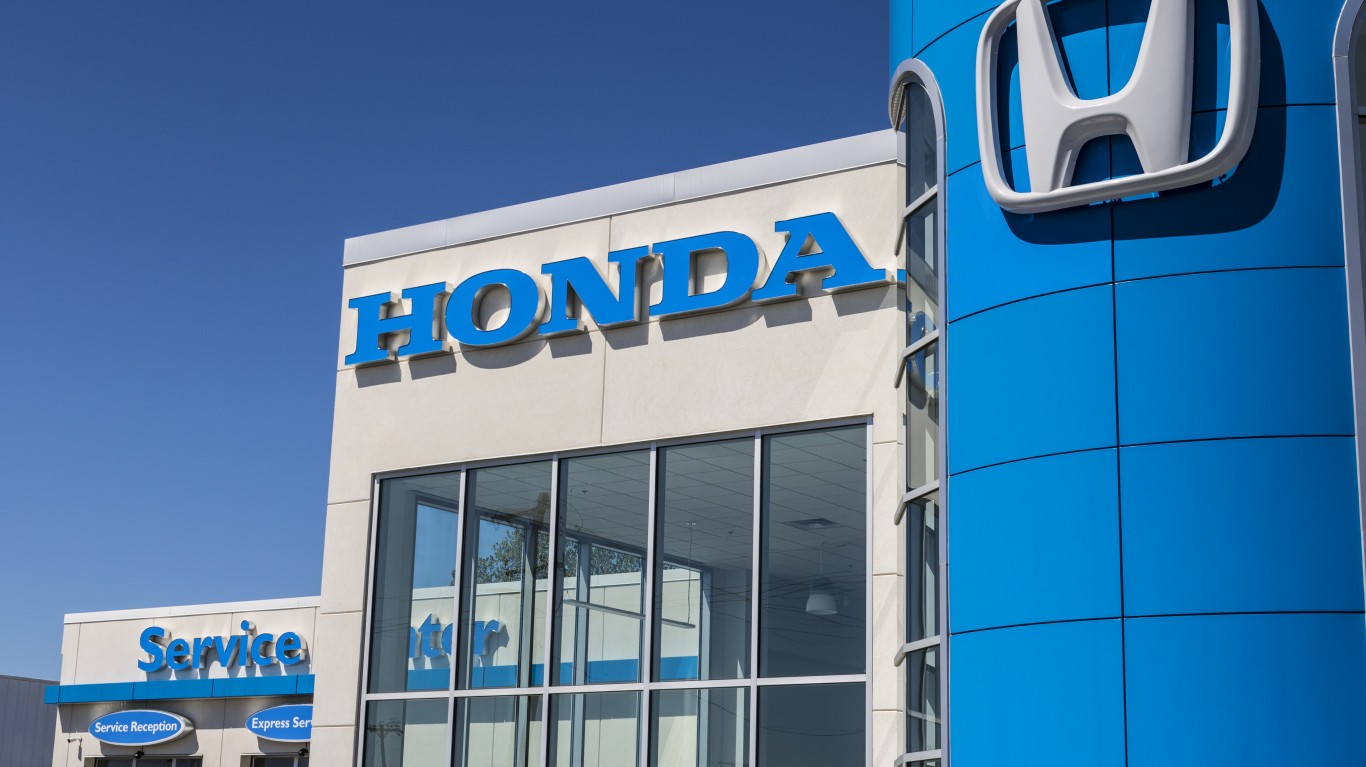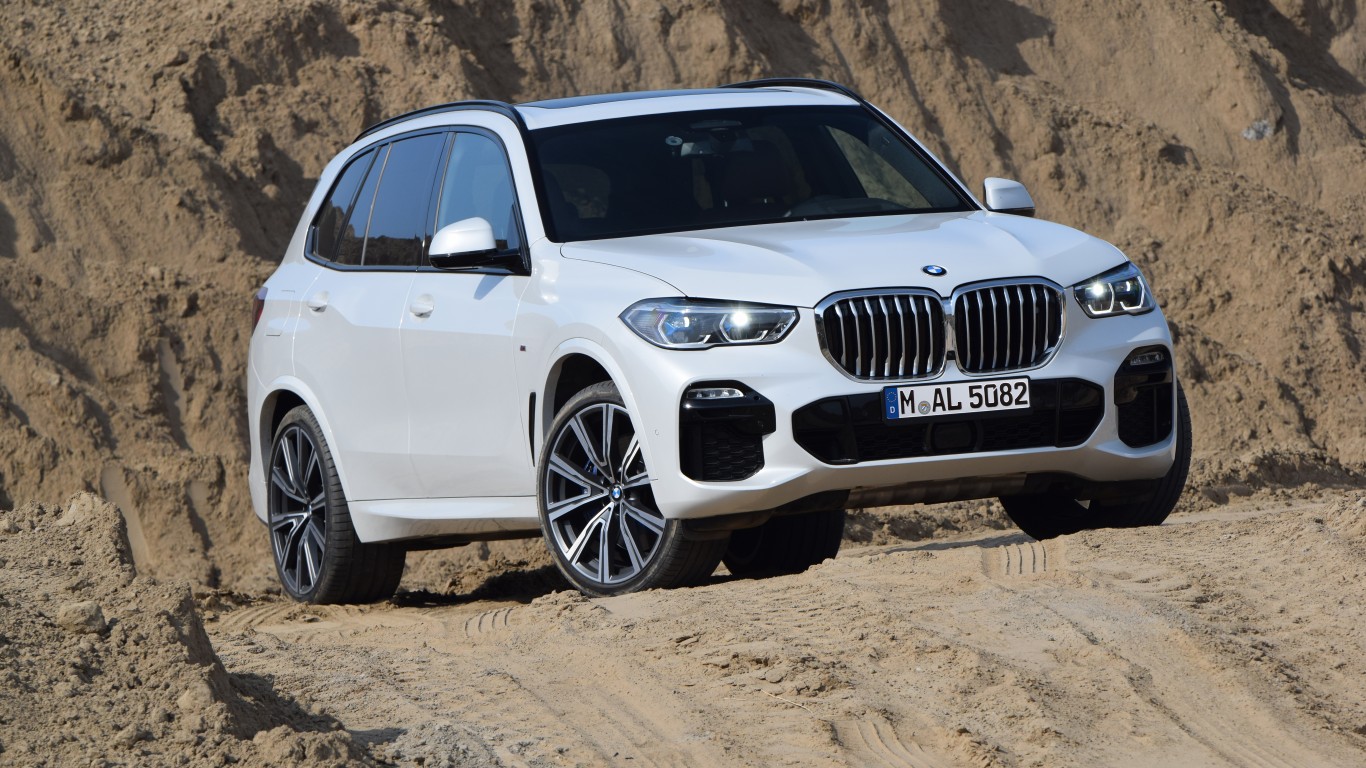 The “cash for clunkers” program was not kind to GM. It did not have a single vehicle on the list of the ten most purchased cars which was dominated by Toyota (TM), Honda (HMC), and Ford (F). GM had 17.6% of the total new cars sold, behind Toyota’s 19.4%. The plan did not do much for GM’s August sales, which fell 20% from the same month last year.
The “cash for clunkers” program was not kind to GM. It did not have a single vehicle on the list of the ten most purchased cars which was dominated by Toyota (TM), Honda (HMC), and Ford (F). GM had 17.6% of the total new cars sold, behind Toyota’s 19.4%. The plan did not do much for GM’s August sales, which fell 20% from the same month last year.
GM has decided to launch its own gimmick to get new car buyers. It will offer customers a Satisfaction Guarantee which allows buyers to return their new GM vehicle to their dealer between 31 and 60 days of purchase and receive a refund of the purchase price for the car. The vehicles have to be bought by November 1 to qualify.
GM Chairman Ed Whitacre will pitch the new program in TV commercials, which is hard to understand. Whitacre is 67. GM is trying to get younger buyers for several of its brands. Whitacre has never been in the car industry. He joined the GM board in May. There may not be a single person in the US who knows Whitacre’s face which usually disqualifies people as television pitch-men. And, GM has a CEO, Fritz Henderson, who has been in the car business for three decades and a product chief, Bob Lutz, who has been marketing vehicles for four decades. The choice of Whitacre to be the face of GM is indefensible.
There are several problems with the fantastic new GM car guarantees. The first is that some consumers believe that if the vehicles are competitive on their own merit offering the equivalent of a two-month test drive should be unnecessary. The fact that none of the other car companies, foreign or domestic, has matched the offer makes it seem a more than a little desperate.
Another issue with a money-back guarantee is similar to one which confronted the “cash for clunkers” program; it encourages impulse buyers. Some of these customers will buy new vehicles, have the money to pay for them, and be happy with their choices. Other impulse buyers are stretching themselves financially to get in on a good deal. Those consumers may have buyer’s remorse and are probably more likely than most customers to default on their car loans.
The GM program is certain to bring in impulse buyers of its own. In its case, many of these customers will simply drop off their vehicles before the guarantee period ends and be done with it.
The federal government did not have to worry about what buyers did after they picked up their new vehicles. The Transportation Department sent out its checks. Sales of cars in the US based on the program reached nearly 700,000. Whether the people who bought the cars liked them or paid for them was academic. GM faces a set of difficulties that the US government did not. People who take the incentive to buy a car that they can return may return them in great waves. That would be a public relations humiliation for GM and something that would also damage it financially. Used cars, even ones with low mileage, don’t bring in much money.
The most vexing problem that GM program faces is that it may simply bring in many people who would have bought a company product after November 1. There was a similar concern that while the “cash for clunkers” program caused sales of new cars in the US to increase in the summer, it might cause them to drop in the autumn and winter. That was based on the theory that no significant overall demand has returned to the car market. The economy is too weak and unemployment is too high. Car sales are already dropping sharply again in September, which appears to prove the theory that the “clunkers” program had the effect of dislocating sales from one period to another.
GM has to confront the possibility that the Satisfaction Guarantee will help sales over the next six weeks but doom them for later in the year.
The Satisfaction Guarantee has a relatively good chance to ruin whatever turnaround has begun at GM. GM will have developed a reputation as a big car company with products that no one wants if the program fails. If it succeeds, GM may only be selling cars now that it would have sold anyway in two or three months.
Douglas A. McIntyre
In 20 Years, I Haven’t Seen A Cash Back Card This Good
After two decades of reviewing financial products I haven’t seen anything like this. Credit card companies are at war, handing out free rewards and benefits to win the best customers.
A good cash back card can be worth thousands of dollars a year in free money, not to mention other perks like travel, insurance, and access to fancy lounges.
Our top pick today pays up to 5% cash back, a $200 bonus on top, and $0 annual fee. Click here to apply before they stop offering rewards this generous.
Flywheel Publishing has partnered with CardRatings for our coverage of credit card products. Flywheel Publishing and CardRatings may receive a commission from card issuers.
Thank you for reading! Have some feedback for us?
Contact the 24/7 Wall St. editorial team.




